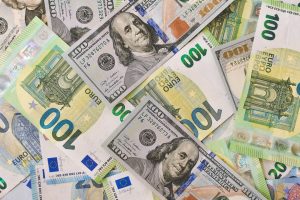Factors Affecting Forex Rate in India: An In-Depth Analysis
The foreign exchange market, commonly known as the forex market, is a decentralized global market where currencies are traded. It is the largest and most liquid market in the world, with an average daily trading volume of over $6 trillion. The forex market plays a crucial role in determining exchange rates, which in turn affect the economy of a country. In India, various factors influence the forex rates, and understanding these factors is essential for anyone involved in forex trading or interested in the Indian economy.
1. Inflation and Interest Rates:
Inflation and interest rates are two significant factors affecting forex rates in India. Inflation refers to the rise in the general level of prices of goods and services over time. Higher inflation erodes the purchasing power of a currency, leading to a depreciation in its value. Central banks use interest rates to control inflation. When inflation is high, central banks raise interest rates to curb spending and reduce the money supply. Higher interest rates attract foreign investors seeking higher returns, increasing the demand for the country’s currency and strengthening its value.
2. Balance of Trade:
The balance of trade, also known as the trade balance, is the difference between a country’s exports and imports of goods and services. A positive trade balance, also called a trade surplus, occurs when a country exports more than it imports. This leads to an inflow of foreign currency, increasing the supply of the country’s currency and strengthening its value. Conversely, a negative trade balance, or a trade deficit, occurs when a country imports more than it exports, resulting in an outflow of foreign currency and weakening the value of its currency.
3. Political Stability and Economic Performance:
Political stability and economic performance are crucial factors influencing forex rates in India. Investors prefer stable countries with strong economic fundamentals to minimize risks. Any political instability or economic uncertainty can lead to a decline in foreign investments, causing the currency to weaken. On the other hand, a stable political environment and positive economic indicators attract foreign investors, increasing the demand for the country’s currency and strengthening its value.
4. Foreign Direct Investment (FDI):
Foreign direct investment refers to the investment made by foreign entities in the domestic economy of a country. FDI plays a significant role in determining forex rates in India. Higher FDI inflows indicate confidence in the country’s economic prospects and can lead to an appreciation in the value of the currency. Foreign investors bring in foreign currency, increasing its supply and strengthening the currency’s value.
5. Monetary Policy:
Monetary policy refers to the actions taken by the central bank to manage the money supply and interest rates. In India, the Reserve Bank of India (RBI) is responsible for formulating and implementing monetary policy. Changes in monetary policy, such as interest rate adjustments or changes in reserve requirements, can impact forex rates. Higher interest rates attract foreign investors, increasing the demand for the currency and strengthening its value. Conversely, lower interest rates may weaken the currency as it becomes less attractive for foreign investors.
6. Geopolitical Factors:
Geopolitical factors, such as wars, political conflicts, and trade disputes, can have a significant impact on forex rates in India. Uncertainty and instability caused by geopolitical events can lead to increased volatility in the forex market. Investors become cautious and may shift their investments to safer currencies, causing the value of the affected currency to weaken.
In conclusion, various factors influence forex rates in India. Inflation and interest rates, balance of trade, political stability and economic performance, foreign direct investment, monetary policy, and geopolitical factors all play a crucial role in determining the value of the Indian currency. Understanding these factors is essential for traders, investors, and policymakers to make informed decisions and navigate the dynamic forex market effectively.






